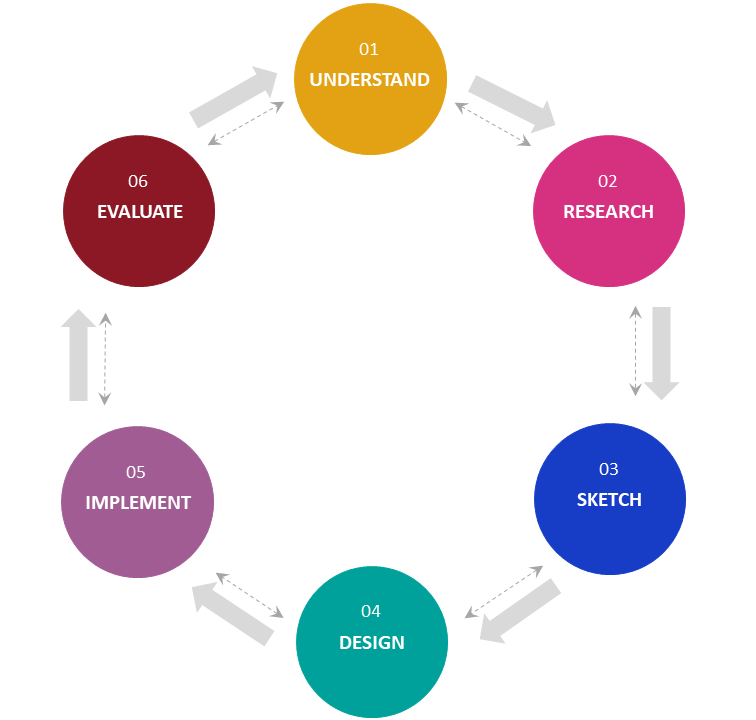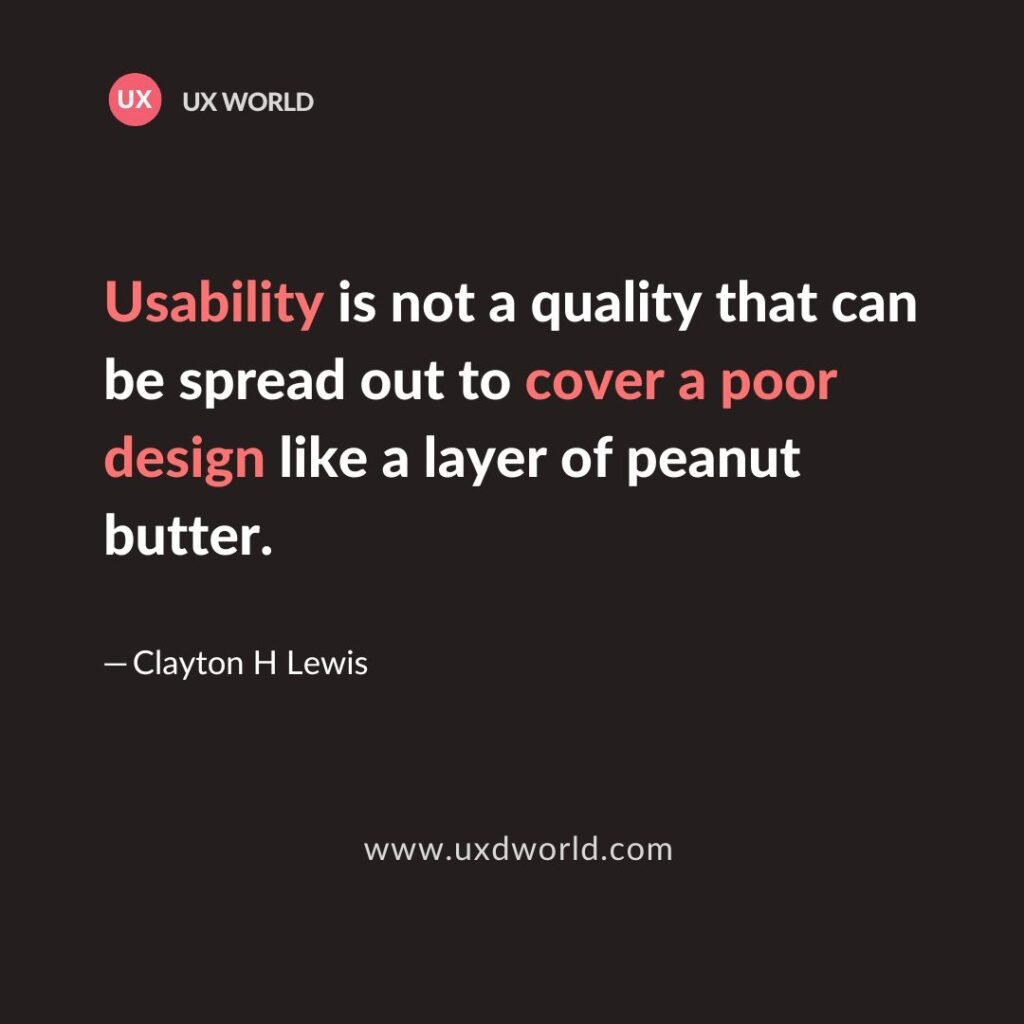Last Updated on September 12, 2024 by UX World
What is User Experience Design?
User Experience is the value you provide to your users when they use your product.
“User Experience Design (UXD or UED) is the process of enhancing user satisfaction with a product by improving the usability, accessibility, and pleasure provided in the interaction with the product.” — Wikipedia
Developing a user experience to the level of customer satisfaction is not a single person or team’s responsibility, instead, it is a company’s vision.
Why User Experience Matters?
“Design is not just what it looks like and feels like. Design is how it works.” — Steve Jobs.
Great user experience design not only highlights and promotes your product, but has also become a key part of building and growing user confidence.
A great product or compelling content without an appealing user experience may affect the ability of an organization to achieve its business goals.
Best Approach to User Experience Design
Good user experience design is always part of the product development process.
You interact with your users to build a unique combination of structure, content, and user experience that will efficiently accomplish the required goals.
“The primary factor of your success lies in the fact that you keep your user in the center of your design process.”
This approach allows you to create designs that are clean, simple, intuitive, flexible, and engaging, and provide a WOW experience to your users and thus differentiate you from your competitors.
User Experience Design Process
The user experience design process is an iterative method that helps you continuously improve and polish your designs.
In the process, you go through different stages repeatedly while evaluating your designs at each stage.
Each stage involves relevant stakeholders in your organization who participate in the process to make your products highly efficient and usable.
The design process involves the following six stages.
- Understand
- Research
- Sketch
- Design
- Implement
- Evaluate

1. Understand
Design solves a problem. To provide a solution, you first need to understand the problem.
“Before beginning the design work, let your Design team understand the requirements clearly.”—UX World
To analyze requirements, follow industry-standard user research methods including contextual and individual interviews while observing the users in the real environment.
Conduct brainstorming sessions with clients and show them your existing products (if any) to get their feedback.
This knowledge about users and their environment helps you to provide a clear direction to build your designs.
“To be a great designer, you need to look a little deeper into how people think and act.” — Paul Boag
Stakeholders
- Design Team
- Product Manager
Activities
- Meet, talk, observe, and understand users in their environment
- Analyze requirements to understand and clarify them
- Define user personas and use cases
Outcomes
- User Personas
- User Stories
- Use Cases
2. Research
Research is the basic key step to designing the user experience.
“It took me a few seconds to draw it, but it took me 34 years to learn how to draw it in a few seconds” — Paula Scher
The design team does their research work to explore how the outer world is working on such features.
Sherif Amin, Product Designer called it UX Competitive Analysis. He listed three purposes of this analysis:
- Understand market competition
- Learn about your domain
- Get inspiration and ideas from your competitors
Keep an eye on the latest UI trends, design principles, and your existing user experience guidelines.
While researching, think of possible layouts and options to provide the desired experience.
Stakeholders
- Design Team
Activities
- Study of competitors’ approaches
- Research on similar features in the world
- Analysis of the latest UI/UX trends, design principles, and rules
Outcomes
- A bunch of ideas you can use to build your actual design work
3. Sketch
This stage involves the UI definition of the required feature. The design team drives this activity which is based on the last two stages of the process.
Draw paper sketches, whiteboard flows, and wireframes to share your ideas with stakeholders.
This stage itself is an iterative process.
“Designing is not something that you just create and start using it. Draw and draft, and redraw and redraft, thus creating an unmatched experience.”
Testing and evaluation of wireframes is part of this stage. The design team builds initial mockups and shares them with stakeholders to get their input.
Throughout the process, it is important to keep your goal in mind : make a usable design to achieve end-user satisfaction.
Stakeholders
- Design Team
- Product Manager
Activities
- Generate ideas and work on basic sketches
- Brainstorming sessions with stakeholders to get their feedback
- Re-draw sketches and re-test them with stakeholders
Outcomes
- Sketches
- Wireframes, Mockups
4. Design
Now you have finalized the layout and flow of the required interface with you, the next step is to work on the final graphics.
Turn the initial mockups and wireframes into great-looking images with themes and styles applied to them.
Preparing and sharing design specifications (principles, guidelines, colors, typography, iconography) with the Development team is also part of this stage.
Stakeholders
- Design Team
- Product Managers
Activities
- Build UI images
- Define the final theme, specs, and guidelines required for implementation
- Design icons to display on screens
- Sessions with stakeholders to get their feedback from business and technical perspectives
Outcomes
- Design images
- Detailed design specs like colors, theme, styles, guidelines
- Icons
5. Implement
Since technical people participate in the early stages of the process, they can start implementation while the Design phase is in progress.
The development team builds back-end functionality, and connects it with UI when they get design artifacts.
The Design team should involve in this step to help the development phase. While implementing, it is possible to raise the need for minor changes in design.
Stakeholders
- Development team
- Design Team
Activities
- Implement back-end functionality and front-interface
Outcomes
- Developed UI with complete functionality and experience following the designed theme and style
6. Evaluate
When product features are implemented, the end product is evaluated based on a few factors:
- Is the system usable?
- Is it easy to use for end users?
- Is it flexible and easy to change?
- Does it provide the desired solution to the user’s problems?
- Does the product have the credibility that makes someone want to use it because of the experience it provides?
“The design team validates the product in terms of user flow and experience and identifies areas where improvements are needed.”
Stakeholders
- Design Team
- Product Manager
Activities
- Go through the flow and feel the experience
- Perform a comparison of implementation and a defined interface
Outcomes
- Users’ feedback
- UI audit reports
- Areas marked where improvement is required
After this last stage, the process will iterate itself and you may go to step 1 to understand the required changes or start thinking about the next UI feature.
The process goes on until the desired experience and customer satisfaction are achieved.
To get more understanding of the UX design process and other related topics, you can follow: What is User Experience (UX) Design?
Conclusion
All major stakeholders in your company contribute to the process by performing their tasks and duties. This is the only way you can retain your existing users and attract new ones in this competitive world.
Want to Learn UX Design?
Try Interaction Design Foundation. IxDF offers online design courses covering the entire UX design spectrum, from foundational to advanced level. As a UX Design World reader, you get 25% off your first year of membership with the IxDF.
The UI/UX Design Specialization from Coursera brings a design-centric approach to user interface and user experience design. It offers practical, skill-based instruction centered around a visual communications perspective. By learning this Design Specialization, you can design high-impact user experiences for your customers.
Thanks for reading.
Subscribe to more related articles on UX World.
If you have any questions, contact us here: Facebook | YouTube | Instagram | Linkedin



